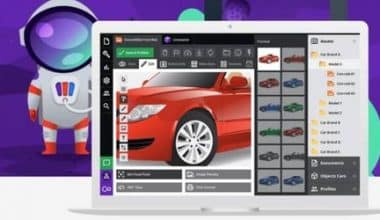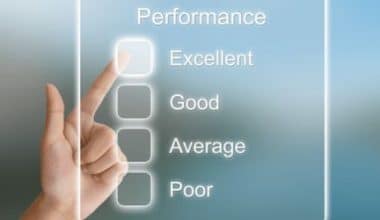The process of maintaining an organization’s assets and resources while skillfully controlling time and expenses to guarantee the highest level of operational efficiency is known as maintenance management. The maintenance management system has evolved from being antiquated, laborious, and handwritten to be more automated and computerized. A software system is not the only thing that falls under maintenance management. It combines the best people, software, and practices, all of which are focused on the same goals. Here are some examples of fleet software and computerized maintenance management systems (CMMS).
What Does a Maintenance Management System Do?
The tracking and management of a company’s assets, such as its machinery or buildings, through its maintenance resources, such as labor and supplies, is known as maintenance management. By minimizing downtime, maintenance management aims to ensure that production proceeds efficiently and profitability rises.
What are the Types of Maintenance Management Systems?
Here are five different types of maintenance management systems, listed from most simple to most complex:
- Run-to-failure maintenance
- Time-based maintenance
- Condition-based maintenance
- Predictive maintenance
- Prescriptive maintenance
Computerized Maintenance Management Systems (CMMS)
Software that centralizes maintenance data and streamlines maintenance operations is known as a computerized maintenance management system, or CMMS. It aids in maximizing the use and accessibility of tangible assets such as vehicles, machinery, communications, plant infrastructure, and other assets. They are also known as computerized maintenance management information systems (CMMIS), and they are used in the manufacturing, oil and gas, electricity, building, and transportation sectors, as well as other sectors where physical infrastructure is important.
A CMMS database is its central component. The information about the assets that a maintenance organization is responsible for maintaining, as well as the tools, supplies, and other resources needed to do so, is organized using a data model in the system.
How Does Computerized Maintenance Management Systems (CMMS) Software Work?
A CMMS system serves as work order software, among other things, to track maintenance requests and schedule tasks. It assists maintenance teams in organizing their processes and reducing downtime. A CMMS also allows teams to monitor machine health and conditions round-the-clock so they can implement condition-based maintenance through integrations with vibration sensors and other condition monitoring tools.
Maintenance teams can connect their operations to the purchasing and inventory processes used elsewhere in an organization with the aid of other crucial CMMS integrations, such as enterprise resource planning software. A CMMS must be able to communicate seamlessly with these other business systems in order to function in today’s organizational environments, even though maintenance and reliability teams may spend their time concentrating on keeping machines running.
Modern maintenance managers depend on CMMS systems to elevate their maintenance programs, restructure their workflows, and enhance the tracking and analysis of maintenance events. A CMMS can also facilitate accurate maintenance activity documentation, which is essential for heavily regulated industries that are subject to audits.
A CMMS is ultimately a database, and the data it holds supports numerous tasks carried out by various teams. Visibility into inventory status or costs, supply contracts, and other maintenance tasks can be useful for those in operations or finance.
A computerized maintenance management system can help businesses organize and manage:
- Resources and labor
- Asset lifecycle
- Prioritization and scheduling of work orders
- Preventive maintenance
- Inventory and materials
- Monitoring compliance and audits
- Dashboarding and reporting
- Mobile maintenance functionality
- Condition monitoring
- Customized training and assistance
What are the Benefits of Using CMMS Software?
Computerized maintenance management systems software can be implemented and used with great efficiency and lifecycle benefits. Overall, it enables teams to coordinate their maintenance procedures and endeavors with those of other divisions and corporate objectives. Everyone’s work becomes a little bit more productive when there is a system in place that permits cross-departmental data sharing.
The following are the top benefits of computerized maintenance management systems software:
#1. Safe and healthy environments
A CMMS can improve safety, health, and environmental problems in accordance with international, national, state, local, or institutional regulations. Assets are less likely to fail in a way that puts workers in danger when they are maintained properly and promptly. Obtain reports on incidents, flaws, histories of corrective actions, and process change management.
#2. Work order management and workflow visibility
Work order software enables teams to visualize actions, assisting all levels of workers in assessing the current status and raising work order completion rates through dashboards and reports.
#3. Mobile workforce
Keeping field workers mobile can be a challenging and expensive endeavor. The best software, however, provides advanced mobile connectivity for users who don’t frequently return to the office. Utilizing a CMMS that accommodates mobile workers, deploy teams remotely.
#4. Automation and processes
Numerous processes are ready for automation, including:
- Reorders of inventory
- Scheduling shifts
- Work orders assigned based on availability
Users can automate numerous procedures by switching to a CMMS. Time is saved, human error is decreased, and productivity is increased by automation.
Maintenance Management Systems Software
Maintenance management systems software is used in a variety of different industries to track equipment maintenance activities and arrange service visits. The software aids in automating the process of adhering to maintenance schedules by sending reminders and maximizing repair times.
What to Take Into Account When Selecting Maintenance Management Software:
- Make sure your device satisfies the minimum specifications needed to run the software of your choice. Lags are brought on by software that is too powerful for your device.
- Think about selecting software with scalable features so that your data is maintained by the same program even if you need to upgrade your services.
- Rigid feature options in software might not be what your company needs. If your needs are unusual, looking for software with customizable features might be a better fit.
Best Maintenance Management Systems Software:
Here is the list of the best top management systems software below:
#1. UpKeep
- $25.00 /mo.
- It’s easy to use and has strong monitoring features.
#2. Tofino
- Only quote
- Excellent customer support, as well as first-rate search and reporting tools.
#3. Net Facilities
- $2500.00 /yr.
- Better for small businesses and has a good range of features.
#4. Maintenance Pro
- $29.00 /mo.
- Offers a good tool for preventive maintenance and top-notch customer service.
#5. mHelpDesk
- $99.00 /mo.
- Software is simple to use, but you have to pay to get your data back if you stop using the service.
#6. Asset Essentials
- $2,500.00 /yr.
- Provides excellent training materials and customer support, but there is a significant learning curve.
#7. Manager Plus
- $33.00 /mo.
- The features are very basic but they are inexpensive and simple to use.
Fleet Maintenance Management Systems
All facets of keeping your fleet operating efficiently on the road are covered by fleet maintenance management systems. Uses maintenance management software to:
- Monitor specific vehicles during maintenance and deliveries
- Plan efficient routes that avoid traffic and construction zones
- Plan proactive maintenance to prevent mechanical problems
- Spot potential engine problems and erratic driving behaviors
- Real-time delivery and route planning.
A fleet maintenance management system makes use of both hardware and software to give you real-time data that can be accessed from a distance. For instance, Fleet managers can combine Samsara AI Dash Cams with a full-fledged fleet management system. Then they are able to see videos of their drivers as well as the road in front of them. This makes it simple to recognize and flag abrupt stops that damage your vehicles.
Importance of Fleet Maintenance Management Systems
The short answer is that it decreases the amount of downtime experienced by your fleet—proactive vehicle maintenance can also lower the likelihood of mishaps and last-minute repairs. Fleets are more prone to expensive malfunctions and lost opportunities without a complete maintenance management solution. These three typical issues frequently arise in fleets that are not properly maintained:
#1. Inaccessible vehicles or delayed deliveries as a result of vehicle problems
Fewer vehicles can handle deliveries when an engine fault code or breakdown prevents your trucks from getting on the road. Customer satisfaction suffers when deliveries are delayed, so fleet managers should use a preventative maintenance strategy to prevent unforeseen breakdowns to reduce the likelihood of late deliveries. By immediately informing mechanics of any vehicle flaws, intelligent fleet maintenance solutions can reduce the amount of time you spend dispatching them.
#2. Simplify regulations and paperwork
It is time-consuming for your employees to log miles and keep track of vehicle maintenance on paper, which slows down your fleet. Tracking your vehicles on the road and in the shop is made simpler by the digitization of fleet maintenance management. Software updates make it simple to guarantee that your fleet is adhering to the most recent rules.
#3. Short lifespan and frequent replacement of vehicles
When a vehicle’s engine is running but it is not moving, this is referred to as “idling.” Excessive idling time raises fuel costs and accelerates vehicle wear and tear. According to the Environmental Protection Agency, fleets can save up to $6,000 annually per vehicle by cutting down on idling time and maximizing fuel efficiency.
Fleet Maintenance Management Systems Software Can Be Useful In:
Regular maintenance can be a daunting task for busy managers when your fleet is constantly in motion. However, maintenance alerts and schedules can be automated with fleet maintenance software. For instance, the software keeps track of when a vehicle needs maintenance and lists it as unavailable when it is in the shop. The automation enables fleet managers to concentrate on other important objectives. Here are the top five benefits that fleet maintenance solutions can have for your business:
#1. Make things more predictable
Road accidents result in costly and potentially dangerous delays as well as service gaps. By maintaining a consistent preventative maintenance schedule for your vehicles, fleet maintenance management software helps you avoid breakdowns.
#2. Enhance maintenance
The health and lifespan of the vehicle are extended by proactively identifying vehicles that require maintenance. Fleet managers can implement preventative vehicle maintenance with the help of specific telematics solutions that provide previously unheard-of visibility into vehicle diagnostics. You can anticipate planned maintenance downtime with the aid of fleet maintenance software like Samsara. Using an all-in-one platform allows you to schedule corrective maintenance procedures as well.
#3. Increase security
Fleets place a high priority on safety, and your safety record is heavily influenced by the maintenance of your vehicles. Engine issues and poorly maintained vehicles can endanger the lives of your team members and other road users. However, compiling vehicle information for each truck in your fleet may seem like a tedious task. Fortunately, managers can use tools like AI dual dash cams to record safety-related incidents rather than doing so manually. With the aid of artificial intelligence, these dual-facing dashcams can detect unsafe driving and help you take appropriate action.
#4. Information-driven choices
Cloud-based technology can help fleet and maintenance managers make the most of their data by reducing the amount of information they have to manage. Without the hassles of paperwork and endless calls, all-in-one telematics solutions offer quick and simple access to fleet data and empower drivers to make decisions about everything from maintenance to real-time routing.
#5. Increase your revenue
By ensuring that every vehicle is in excellent condition, enhancing asset management, and extending vehicle lifetimes, fleet maintenance systems software increases the fleet’s overall efficiency. This calls for more resources and fewer replacement cars.
Fleet Maintenance Software
Following is a list of fleet maintenance management systems software;
#1. Samsara
Samsara is a cloud-based fleet management program with features like GPS tracking, trailer tracking, dashboard cameras, routing and dispatch, reefer monitoring, and more.
#2. Fleetpal
Work order management is easy with Fleetpal. You can easily keep track of all costs, parts, and labor with just a few clicks.
#3. AUTOsist
Want to track fleet maintenance more effectively? They provide you with a straightforward method for keeping track of services, inspection checklists, reminders, tracking fuel, managing part inventories, and other crucial records.
#4. TMS Trimble
Trimble TMS (previously TMW Systems) aids carrier companies of all sizes in maintaining competitive costs and services while consistently providing a high level of value.
#5. ManagerPlus
To assist managers and maintenance specialists in getting the most out of their assets and machinery, ManagerPlus is a potent enterprise asset management software.
#6. Whip Around
Whip Around is a straightforward, efficient method for fleet maintenance. Maintain logs, easily manage issues and work orders, and plan out preventive maintenance.
What is the Best Software for Maintenance Management?
The top maintenance management software solutions are as follows:
- Net Facilities.
- Maintenance Pro.
- Manager Plus.
- Hippo CMMS.
- Fiix.
- mHelpDesk.
- Direct Line.
- UpKeep.
What is meant by Software Maintenance?
Software maintenance includes the software development life cycle. Its main goal is to modify and update software programs after they are delivered in order to fix bugs and boost performance. A model of the real world exists in software. The software needs to be changed possibly when the real world changes.
What are the Components of Maintenance Management?
Over 70 years of industrial revolutions have resulted in gradual changes to the maintenance management sector. Software for computerized maintenance management has also advanced recently. However, the five main elements of CMMS solutions are asset management, inventory management, work order management, preventative maintenance, and reports/dashboards.
Is SAP a CMMS?
Yes! SAP Plant Maintenance is a CMM software that carries out maintenance management by conducting three essential tasks: Inspection, which consists of all actions that determine the true state of a technical system. All actions that keep a technical system in top shape fall under the category of preventive maintenance.
Conclusion
Computerized maintenance management systems software has many advantages because it makes it possible for industries to operate with few interruptions. The system enables businesses to keep a thorough maintenance schedule that emphasizes preventative measures rather than pricey reactive remedies. It identifies preventive maintenance as the key to the dependability and longevity of equipment.
The CMMS’s built-in safety measures are advantageous to both businesses and employees. Additionally, the software supports businesses’ reporting and auditing processes. All of these factors combine to make the CMMS a versatile tool that reduces machine efficiencies and enhances the performance of critical infrastructure.
Maintenance Management Systems FAQs
What is a good maintenance management system?
Wrike is the top maintenance management software for small businesses. The best system is one that makes it simple to create and distribute work orders, itemize maintenance tasks, and create preventive schedules, while also facilitating ease of use and quick dashboard reporting to stay on top of maintenance projects.
What is the example of CMMS?
The number of wheelchairs available for use in a retirement community or the number of specialized hospital beds that are currently occupied by patients are examples of crucial equipment data that can be tracked by CMMS software.
What is maintenance production management?
The proper upkeep and repair of machinery, equipment, and other plant facilities are the focus of maintenance, which also aids in raising productivity. These facilities should be responsible for the efficient and effective operation of an industry.






